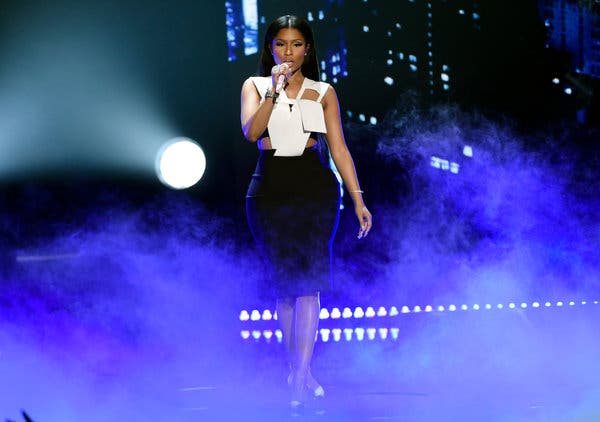The discourse surrounding cultural appropriation is akin to navigating a labyrinth fraught with intricate turns and unexpected dead ends. Among the myriad figures contributing to this complex conversation, Nicki Minaj emerges as both a celebrated artist and a polarizing icon. Known for her flamboyant persona, dynamic lyrical abilities, and eclectic aesthetic, Minaj has captured the attention of audiences worldwide. However, her cultural expressions have led to significant debate, particularly concerning the extent to which her artistry may reflect cultural appropriation rather than cultural appreciation.
At the heart of the contention lies the distinction between appropriation and appreciation. Cultural appropriation is often perceived as the act of taking or using elements of one culture by members of another, particularly when the latter is in a position of power or privilege. It raises critical questions about representation, ownership, and the commodification of cultural symbols. Nicki Minaj, a woman of Trinidadian descent, embodies these complexities, as her work fuses various cultural influences, yet raises eyebrows regarding authenticity and respect.
One can liken Minaj’s artistic expression to a vibrant tapestry, woven with intricate threads from diverse cultures. Each thread contributes to the overall design, but the origins and significance of each may vary widely. For instance, her use of traditional African hairstyles, vibrant clothing, and dance styles evokes admiration for their beauty and cultural significance. Yet, when these elements are deployed within the context of mainstream pop culture, they can be perceived as stripped of their original meaning, leaving behind a commodified version for mass consumption.
Critics often pinpoint specific instances where Minaj’s work appears to traverse this delicate line. An example can be seen in music videos or performances where she incorporates elements associated with African and Caribbean cultures. While her intentions may be rooted in celebration and homage, the resulting commercialization can undermine the cultural significance of those elements, raising concerns about whether they are being appropriated or appreciated. This phenomenon is not unique to Minaj, but her prominence magnifies the discussion.
Minaj’s collaborations and artistic choices often draw from a wellspring of influences that reflects the global nature of contemporary music. However, the lens through which these influences are viewed can vary significantly based on social or racial contexts. When an artist from the dominant culture borrows from marginalized cultures, it may not carry the same weight of historical and sociopolitical implications as when someone from an underrepresented culture does so. In Minaj’s case, her dual identity as both a performer of color and a mainstream figure complicates the narrative. She navigates the tightrope of cultural representation while carrying the burden of stereotypes and expectations projected onto her by society.
Furthermore, one must consider the discourse surrounding the “Black girl magic” movement, which celebrates the achievements and talents of Black women. Nicki Minaj, while undoubtedly a prominent figure in this movement, is a testament to the intersectionality of race, gender, and culture. Her contributions to music and pop culture are substantial; she has paved the way for many women in hip-hop. However, the scrutiny she faces reflects larger societal issues surrounding race and representation. A discussion of her cultural practices inevitably leads to questions about who gets to define culture and the power dynamics involved in that definition.
Furthermore, the backlash against Minaj often aligns with the ongoing struggle for visibility and respect within the spheres of popular culture. When members of marginalized communities publicly confront such appropriation, it can serve as a reclamation of cultural agency. Yet, the process is fraught with challenges, not least because the celebration of one individual can provoke feelings of exclusion among others who may feel their own cultural narratives have been overshadowed.
The conversation surrounding cultural appropriation often hinges on intent versus impact. While Minaj may claim to celebrate her influences, the impact of her work differs significantly among various audiences. This dissonance is particularly evident when her music or imagery is dissected by critics examining the implications of using culturally significant symbols. As cultural consumers, the audience holds a mirror to the artist — reflecting not just the artistry but the broader cultural understanding and sensitivity that may or may not accompany it.
It is tempting to dismiss the conversations around Minaj as mere criticism from the sidelines. However, these discussions can also usher in a deeper understanding of interconnectedness in the global cultural landscape. The phenomena of blending, borrowing, and intertwining musical styles and visual aesthetics allow for rich cultural dialogues that transcend borders, languages, and societal constraints. Minaj’s artistic lexicon embodies this exploration, but it becomes essential to address the repercussions of that exploration through self-awareness and community input.
In conclusion, Nicki Minaj stands at a cultural crossroads, marked by the intricate paths of appropriation and appreciation. The magnetism of her artistic persona invites admiration, yet it also incites scrutiny regarding the authenticity of her cultural representations. As society continues to grapple with these concepts, it is crucial to foster nuanced dialogue that respects the roots and meanings of cultural symbols while embracing the playful, transformative potential of art. Ultimately, the discourse surrounding Minaj’s work exemplifies the delicate interplay between diversity and commercialism, reflecting broader societal debates about ownership, representation, and the enduring power of cultural expression.
